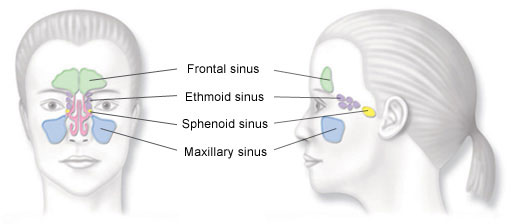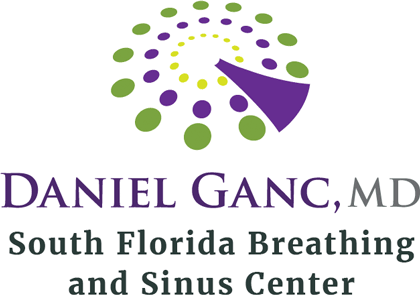Sinusitis
(or Sinus Infection)
Do you …
-
feel congested or have facial pain?
-
find it hard to breathe through your nose?
-
have yellow or green nasal mucus, loss of smell or taste, or headaches?
All of these are possible symptoms of sinusitis — or sinus infection — a common but treatable illness characterized by inflammation of the sinuses.


Learn more about Sinusitis
Watch out for these
typical symptoms of Sinusitis:
- Facial pain, pressure, congestion or fullness
- Discharge of yellow or green mucus from the nose
- Post-nasal drip
- Headache
- Fatigue
- Sore throat
- Difficulty breathing through the nose
- Loss of the sense of smell or taste
- Teeth pain
- Bad breath
- Fever
- Coughing
What causes sinusitis? What are the sinuses?

Sinusitis results from inflammation of the sinus lining, typically caused by bacterial or viral infections. It can also be due to structural problems, such as blockage of the sinus openings.
The sinuses are air spaces behind the bones of the upper face, between the eyes and behind the forehead, nose and cheeks. The sinuses are covered with a mucus layer and cells that contain little hairs on their surfaces called cilia. These help trap and push out bacteria and pollutants. Each sinus has an opening that allows mucous to drain – this drainage is essential to keeping your sinuses working well and you healthy. Anything that obstructs the flow may cause a buildup of mucus in the sinuses and trigger sinusitis symptoms.
Experts agree that healthy sinuses are a key to a good quality of life and that unhealthy sinuses may cause some unwanted complications.

Types of sinusitis:
acute vs. chronic vs. recurrent acute
The typical pattern for sinusitis starts with a cold, allergy attack, or irritation from environmental factors. These cause symptoms — e.g. nasal pressure, nasal congestion, a “runny nose” and fever — that run their course in a few days. When things do not get better and bacteria begin to infect the sinus cavities and cause more inflammation, this condition is called acute sinusitis. Sinusitis occurs when a a bacterial infection develops.
If your sinusitis persists longer than 12 weeks, it is called chronic sinusitis. If you suffer from more than 4 acute sinus infections per year, this is called recurrent acute sinusitis.
Sinusitis facts
- Sinusitis is one of the most common health problems, affecting more than 35 million people in the U.S. yearly. It's impact on physical, functional, and emotional health can be significant.
- It is slightly more common among women than men.
- Yearly healthcare expenditures for sinusitis exceed $8 billion.
- Chronic sinusitis alone causes roughly 7 million yearly physician office visits.



